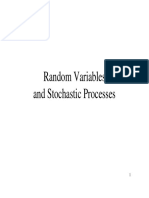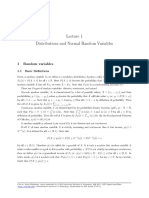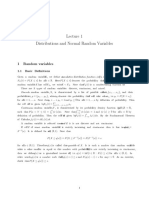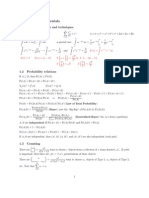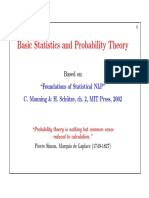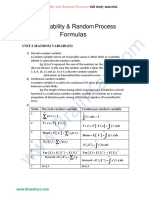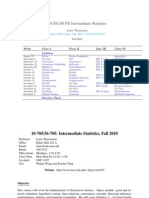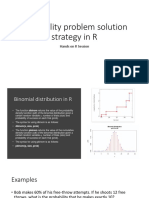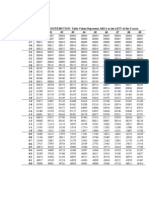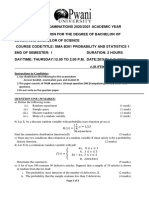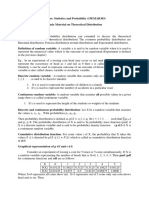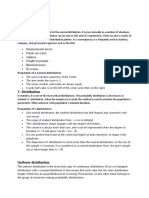0% found this document useful (0 votes)
27 views10 pagesWeek 5-8 Short Notes
The document provides comprehensive notes on continuous random variables, covering their functions, expected values, variances, and various inequalities. It also discusses joint densities, independence, empirical distributions, sample statistics, and limit theorems including the Central Limit Theorem. Additionally, it introduces specific distributions such as Gamma, Beta, and Cauchy, along with important results related to normal distributions and their properties.
Uploaded by
VijayrajtnuCopyright
© © All Rights Reserved
We take content rights seriously. If you suspect this is your content, claim it here.
Available Formats
Download as PDF, TXT or read online on Scribd
0% found this document useful (0 votes)
27 views10 pagesWeek 5-8 Short Notes
The document provides comprehensive notes on continuous random variables, covering their functions, expected values, variances, and various inequalities. It also discusses joint densities, independence, empirical distributions, sample statistics, and limit theorems including the Central Limit Theorem. Additionally, it introduces specific distributions such as Gamma, Beta, and Cauchy, along with important results related to normal distributions and their properties.
Uploaded by
VijayrajtnuCopyright
© © All Rights Reserved
We take content rights seriously. If you suspect this is your content, claim it here.
Available Formats
Download as PDF, TXT or read online on Scribd
/ 10



